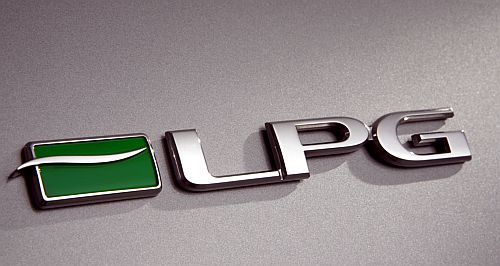News - Market Insight - Market Insight 2024Market Insight: The rise and fall of LPGOnce billed as an environmental saviour, LPG vehicle sales are now zero in Australia15 Apr 2024 By MATT BROGAN TURN the clock back just over a decade and both dual fuel and dedicated liquefied petroleum gas (LPG) vehicles were a commonplace alternative to petrol and diesel.
Adjacent to thriving aftermarket conversion specialists, local vehicle manufacturers were touting the advantages of their own gas models, creating cost-competitive alternatives to emerging technologies, such as petrol-electric hybrid.
But with the demise of local manufacturing, the advent of ridesharing services such as Uber that challenged the big LPG-fuelled taxi fleets and now the shift toward electrification, so too came the decline of LPG.
Also long gone are the days of $6000 incentives introduced by the Howard government for the switch to LPG; electrified assistance, most notably from Toyota, quickly stepped up to fill the void, and by 2018 there was not a single new vehicle sold Down Under with a red diamond riveted to the number plate.
The lower per-litre price of LPG made it a terrific option for reducing the running costs of existing powertrain technology – even though it usually resulted in higher per-kilometre consumption – and, as it is produced in abundance in Australia, LPG helped reduce the nation’s reliance on imported fuel.
Burning LPG instead of petrol and diesel also helps reduce CO2 and NOx emissions but the numbers show its popularity is dwindling.
In 2013, there were approximately 500,000 LPG-powered vehicles registered Australia-wide. As of last year, that number tallied just 200,000. The decline is one a spokesperson for Climate Change and Energy minister Chris Bowen admits has had its time.
“Automotive LPG demand has fallen in Australia over the past 10 years due, in part, to the transition of large fleets to petrol-hybrid vehicles,” the spokesperson said, acknowledging the related demise of the taxi fleet to rideshare-based alternatives.
“We will continue to monitor the fuel market and work with the fuel industry and energy users to ensure Australia’s fuel security.”
LPG bowsers are slowly disappearing from service stations across the country. Those reliant on the fuel may find it more difficult to source LPG as electrified alternatives become more commonplace.
“It is a product that has gone out of favour since the government subsidy for LPG conversions stopped,” said Service Station Association spokesperson Colin Long.
“Ford was producing an LPG Falcon which came onto the market and didn’t take off, and now the big oil company sites are looking at what LPG is bringing to them in terms of sales, and a number have eliminated it as an offer on their forecourts.”
The price of LPG has also increased significantly. The fuel was once reported as achieving a 30 to 50 per cent saving in running costs when compared with a comparable petrol-powered model. For owners of most older LPG-powered vehicles, that figure no longer stacks up.
Compulsory 10-year checks of the storage tank and fuel system, coupled with increased difficulty in the sourcing of replacement parts, has made LPG more burden than blessing.
Add to that more efficient petrol-powered and hybrid options and it seems the once-popular alternative has run out of gas.  Read more9th of April 2024  Market Insight: Zooming in on pricing pictureShifting model, variant mix has large impact on average car prices – but trend is up2nd of April 2024  Market Insight: Chery ‘could have done better’Chery Aus MD says initial sales ‘could have done better’ but adding new models helps25th of March 2024  Market Insight: Five-figure sales for LexusSales of Japanese premium brand Lexus are growing – but all is not what it seems |
Click to shareMarket Insight articlesResearch Market Insight Motor industry news |
















Facebook Twitter Instagram